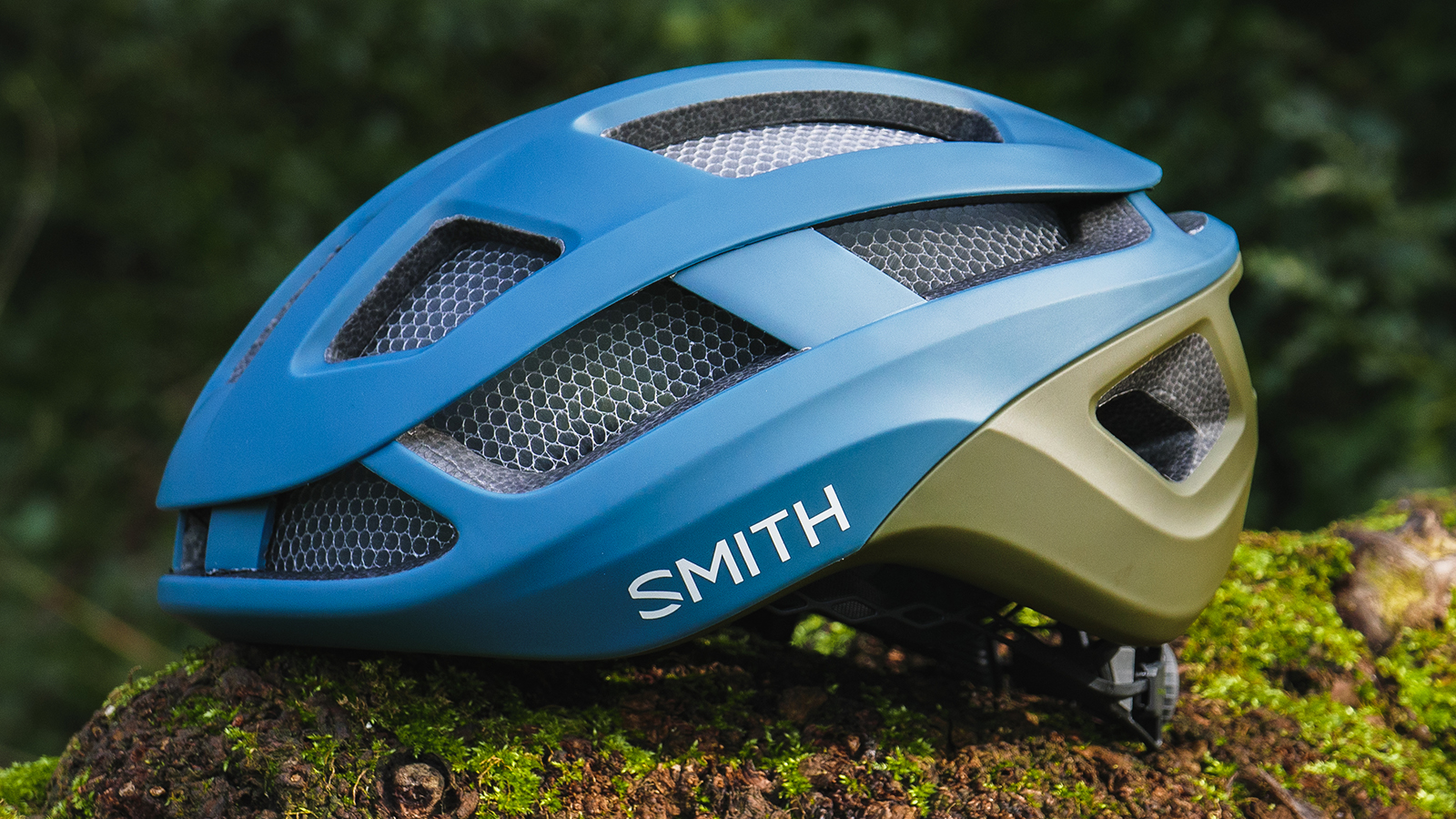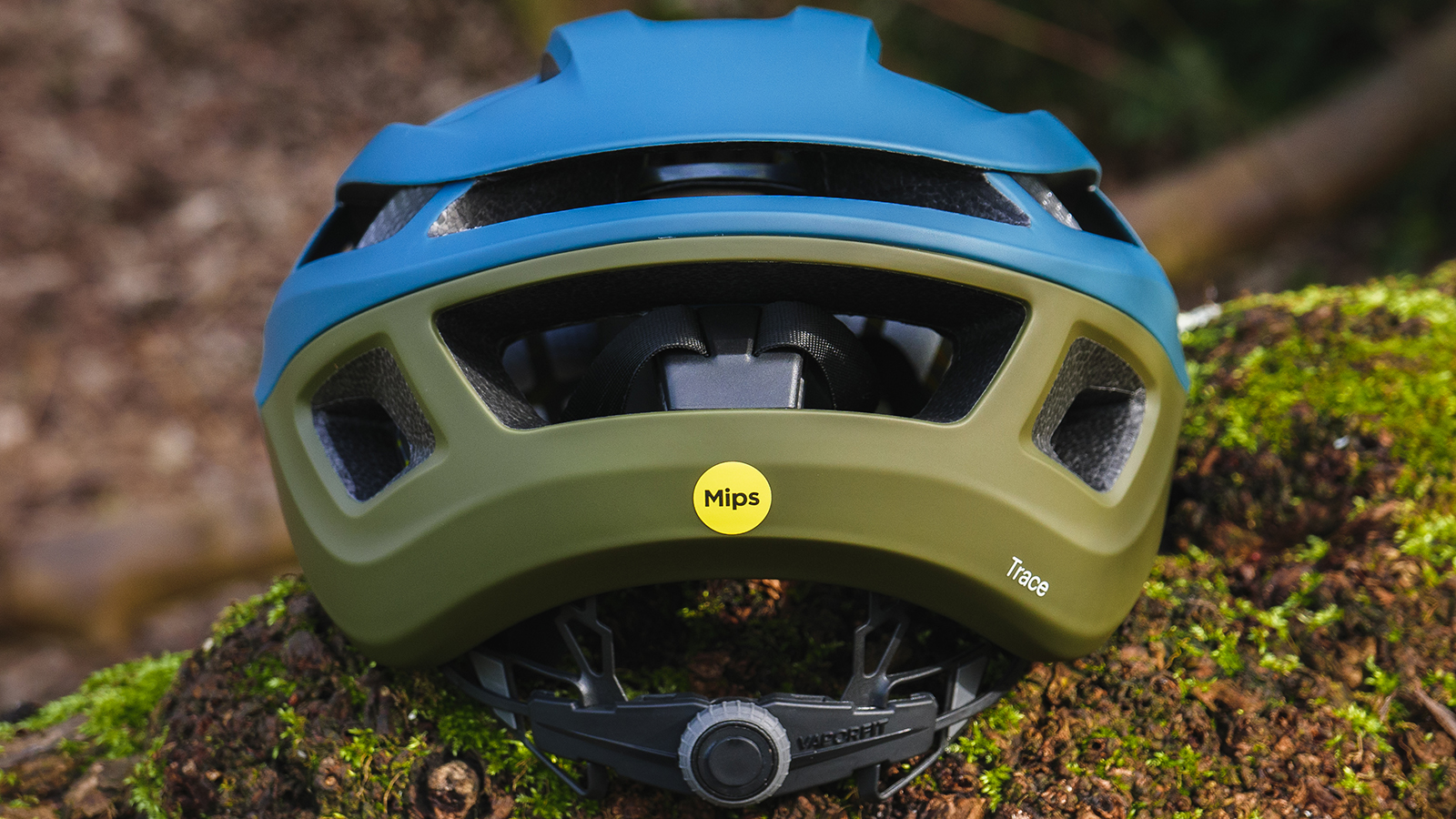Bike Perfect Verdict
A top of the range helmet featuring advanced safety construction for road and gravel which comes with the sacrifice of some ventilation.
Pros
- +
Great fit and highly comfortable
- +
Robust yet lightweight
- +
Wide range of color options
Cons
- -
Reduced ventilation due to Koroyd
- -
Poor sunglasses storage
- -
No reflective detailing (although available on other colors)
Why trust BikePerfect
Smith Optics was founded in 1965 by Robert Smith, a dentist and keen skier, who, with the invention of a double-walled lens, made foggy goggles a thing of the past. Based in the rather aptly-named Sun Valley, Idaho, USA, Smith Optics now produces a range of eyewear for everything from fishing to snow sports, as well as a range of helmets for road, trail, commuting, and young riders.
It makes sense for a cycling eyewear company to also produce helmets. In the case of gravel cycling, the best gravel bike helmets and sunglasses can be designed to integrate with one another both in terms of aesthetics and styling, but also in terms of function – providing optimal airflow to reduce the chance of lens fog, for example.
We’ve already reviewed the Forefront 2 helmet, Smith's equivalently priced trail riding lid, so let's see how the gravel-going Trace performs.

Design and Specifications
The Trace is Smith Optics' top-of-the-line helmet (other than its aero time trial helmet), with a price point to match. With an RRP of $250 / £200, it places itself firmly in the upper-mid to higher category of helmets. Straight out of the box the Trace certainly feels like a premium product to hold, and in the Matte Stone and Moss colorway, it looks the part, too. As you would hope with a helmet in this price range, it is heavy with features, some of which are exclusive to Smith.
As with the majority of helmets, the Trace is primarily constructed from an EPS or expanded polystyrene foam liner which is then coated with a plastic shell. The Trace uses full-shell coverage meaning all of the EPS liner – with the exception of the vent holes – is coated with the plastic shell which offers better protection. There are 18 vent holes on the helmet for ventilation and airflow, and in 11 of these vents Smith has applied a Koroyd layer. Koroyd is a third-party technology designed to help dissipate more energy in a crash. It sort of looks like hundreds of little straws stood vertically, welded together, and stuck inside the helmet. While I’m obviously simplifying the design here, what’s important is that it is an effective way for the helmet to absorb more energy in a crash and prevent that energy from reaching your head.

Inside the helmet, you’ll find another third-party safety feature: the MIPS layer. While the Koroyd system is designed to absorb impact energy, the MIPS system is intended to reduce rotational force to the head. It does this by allowing the helmet to rotate 10-15mm on certain angled impacts. It seems like Smith has got all the safety bases covered by offering two separate systems on the Trace helmet.
For comfort, Smith has two proprietary features aimed at delivering the ultimate fit: the VaporFit dial adjustment system which offers 270-degree fit adjustment with the turn of a dial, and Ionic+ antimicrobial pads which offer sweat-activated odor control. The chin straps use a traditional-style buckle with fixed strap dividers.

Performance
I’ve used the Trace for a wide range of riding including gravel riding, audaxes, and commuting to my day job. I like to use my test helmets on my daily commute. While 10 miles of cycle path and road into Edinburgh’s city center is hardly the most demanding test for a helmet, it does allow me to see how the helmet will hold up against daily use and the rough and tumble of a restaurant staff room.
After weeks of this, I inspected the helmet and was pleased to find that it had held up very well indeed. The matte finish on the shell was unscratched and any marks were easily removed with a damp cloth. One feature I particularly like is that the outer shell extends all the way under the brim of the helmet and fully encloses the EPS liner. It’s often the case that small indentations occur on helmets in this area through general use (or through leaving your helmet around tired chefs), so it’s reassuring to see the liner fully enclosed.
While it’s unlikely a helmet would be damaged beyond use through these small indentations, a full coverage shell will keep your helmet looking good for longer which is also important when investing in a quality helmet.

I found the fit of the helmet to be very good. The VaporFit dial closure system felt safe and secure and I like the fact that the dial can be moved up or down a considerable amount, which helps fine-tune the fit of the helmet and improve comfort. This is especially useful when wearing a hat under your helmet as you can avoid placing the dial on any seams and avoid possible irritation. The Ionic+ antimicrobial pads I found to be soft and comfortable and, while I can’t say I noticed the ‘sweat-activated odor control’ Smith claims to have applied kicking in when I was grinding up hills, the pads are removable and so can be washed. On short and punchy gravel rides, the helmet felt secure without feeling heavy; the 320g weight no doubt helped achieve this.
While the Koroyd system claims to increase crash protection, it does have one drawback: it prevents some sunglasses from being stored securely in the vents of the helmet. While it is possible to attach your sunglasses over the Koroyd system, I personally wouldn’t do this other than when stopped and off the bike. Riding on anything but the smoothest of tarmac will likely result in your sunglasses making an unwanted trip groundwards. I also found that the Koroyd system reduces the effectiveness of the vents, although not enough to be of any concern.
One feature I personally like to see on helmets is some reflective detailing on the rear. I find that the helmet is a great spot for this safety feature as it is in a prominent and visible position for drivers approaching from the rear. The Matte Stone and Moss colorway doesn’t have this feature, although the Matte Neon Yellow Viz does.

Verdict
A great looking and fitting option for gravel and road riding, or for anyone looking for a helmet that may get knocked around a bit more than they’d like to admit. Shoving the helmet into a backpack on the way to your next bikepacking destination? No worries. Helmet swinging from your handlebars as you push your bike up a radical gravel road? Bring it on.
While some venting may be sacrificed to accommodate the Koroyd system, the reality is that for most temperate riding the ventilation is more than adequate. And while the RRP may be high, the Trace can often be found at lower prices at online retailers.
Tech specs: Smith Trace
- Price: $250 / £200
- Sizes: S (51-55cm), M (55-59cm), L (59-62cm)
- Colors: Matte Stone – Moss, Poppy – Terra – Storm, Matte Dew – Aurora – Bone, Matte Bone Gradient, Matte Neon Yellow Viz, Matte Blackout, White – Matte White, Black – Matte Cement, Matte Flamingo – Merlot, Matte Draplin, Matte Cinder Haze
- Claimed weight: 280g

